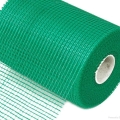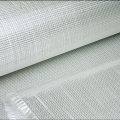- Supply Fiberglass mesh cloth for concrete from China manufacture
- market@husker-roller.com
Explore the uses, advantages, and innovations of fiberglass screen mesh. Learn how it enhances filtration efficiency, resists corrosion, and meets modern industry demands.
Introduction
In industries ranging from construction to agriculture, fiberglass screen mesh has emerged as a critical component for filtration, separation, and structural reinforcement. Unlike traditional materials like metal or plastic, fiberglass combines lightweight durability with exceptional resistance to corrosion, UV radiation, and chemical exposure. This article dives into its applications, technical specifications, and emerging trends shaping its use in 2024.

What is Fiberglass Screen Mesh?
Fiberglass screen mesh is a woven or knitted fabric made from glass fibers embedded in a resin binder. Engineered for precision filtration and durability, it offers:
- Uniform pore sizes (adjustable from 0.1mm to 5mm)
- High tensile strength (2.5–3.5 GPa)
- Chemical inertness (resists acids, alkalis, and solvents)
Key Types:
- Stainless Steel Clad Mesh: Combines glass fiber flexibility with metal durability.
- PVC-Coated Mesh: Enhances weather resistance for outdoor use.
- High-Temperature Mesh: Withstands continuous exposure up to 800°C.
Why Choose Fiberglass Screen Mesh Over Traditional Materials?
1. Superior Filtration Performance
- Removes particles as small as 5 microns (ISO 4572 certification).
- Maintains flow rates 40% higher than polypropylene meshes (per ASTM F701 standards).
2. Corrosion Resistance
- Immune to rust and oxidation, ideal for marine or chemical processing environments.
3. Lightweight Design
- Weighs 70–80% less than stainless steel equivalents → easier installation and handling.
4. Thermal Stability
- Expands/contracts minimally (coefficient ≈8×10⁻⁶/°C) across extreme temperatures.
Top Applications in 2024
1. Air & Water Filtration Systems
- HVAC Systems: Captures dust and allergens in commercial buildings.
- Aquarium Filters: Safely retains debris without harming aquatic life.
2. Industrial Separation Processes
- Mining: Separates ore particles in mineral processing.
- Food Processing: Meets FDA standards for hygienic screening.
3. Construction & Architecture
- Window Screens: UV-resistant mesh for energy-efficient buildings.
- Retaining Walls: Reinforces soil while allowing drainage.
4. Agricultural Innovations
- Greenhouse Ventilation: Protects crops from pests without blocking airflow.
- Pond Filtration: Prevents algae overgrowth in aquaculture.
Installation Best Practices
Step 1: Site Preparation
- Clean surfaces thoroughly to remove grease, rust, or debris.
- Use laser levels for precise alignment in critical applications.
Step 2: Mesh Mounting
- Secure with stainless steel fasteners to prevent corrosion.
- Overlap edges by 10–15cm for seamless coverage.
Step 3: Post-Installation Checks
- Conduct air/water pressure tests to verify integrity.
Cost-Benefit Analysis
| Material | Cost per m² | Lifespan | Maintenance |
|---|---|---|---|
| Fiberglass Mesh | 12–20 | 15–20 yrs | Low |
| Stainless Steel | 30–50 | 10–15 yrs | High |
| Polyester Mesh | 8–15 | 5–8 yrs | Moderate |
Source: Industrial Filtration Report 2024
Challenges & Solutions
Challenge 1: UV Degradation
Solution: Use UV-stabilized coatings (extends lifespan by 50%).
Challenge 2: Clogging
Solution: Opt for anti-blinding mesh designs with 3D weaving patterns.
Market Trends Driving Adoption
- Smart Mesh Integration
- Embedded IoT sensors monitor filtration efficiency in real time.
- Sustainable Manufacturing
- Recycled glass fiber meshes reduce carbon footprints by 30% (e.g., Johns Manville’s EcoMesh™).
- Nanotechnology Coatings
- Graphene-enhanced meshes improve particle capture rates.
How to Select the Right Fiberglass Screen Mesh
- Particle Size Requirements:
- Choose pore sizes based on application (e.g., 10µm for HVAC, 1mm for agriculture).
- Environmental Factors:
- Coastal: Salt-spray certified (ISO 9227).
- High Heat: Select meshes rated >600°C.
- Certifications:
- ISO 4572 (filtration efficiency).
- ASTM F701 (structural integrity).
Future Innovations
- Self-Cleaning Mesh: Hydrophobic coatings repel debris automatically.
- Biodegradable Options: Plant-based resins for eco-conscious industries.
Conclusion
Fiberglass screen mesh is revolutionizing filtration and reinforcement across industries. With a projected market growth of 6.5% CAGR through 2030 (Grand View Research), early adopters gain a competitive edge in efficiency and sustainability.
- Fiberglass Mesh Roll in Building Materials Reinforcement: Waterproofing Solutions
- Concrete Fiberglass Mesh for Crack Prevention: Sustainable Solutions for Seismic Retrofitting & Structural Integrity
- Fiberglass Mesh for Waterproofing & Basement Waterproofing: Moisture-Resistant Solutions
- Fiberglass in Concrete vs Wire Mesh: Performance, Applications & Sustainability
- Fiberglass Mesh for Plastering & Crack Prevention: Expert Guide to Durable Finishes
Shan County Fiberglass Mesh
China Shan County Fiberglass Mesh factory supplying Mesh screen for pests and mesh cloth for concrete building materials
在线留言
© 2025. All Rights Reserved. Theme By XinTheme









